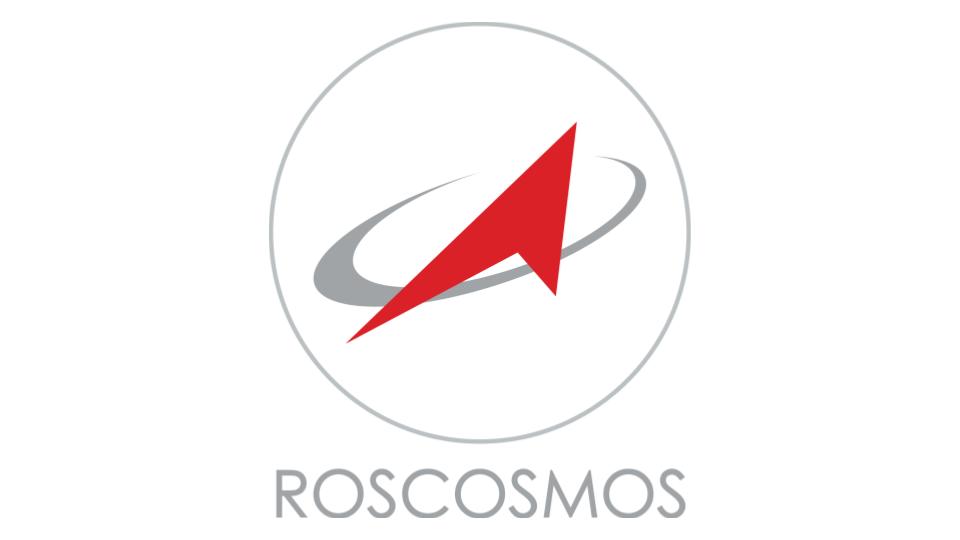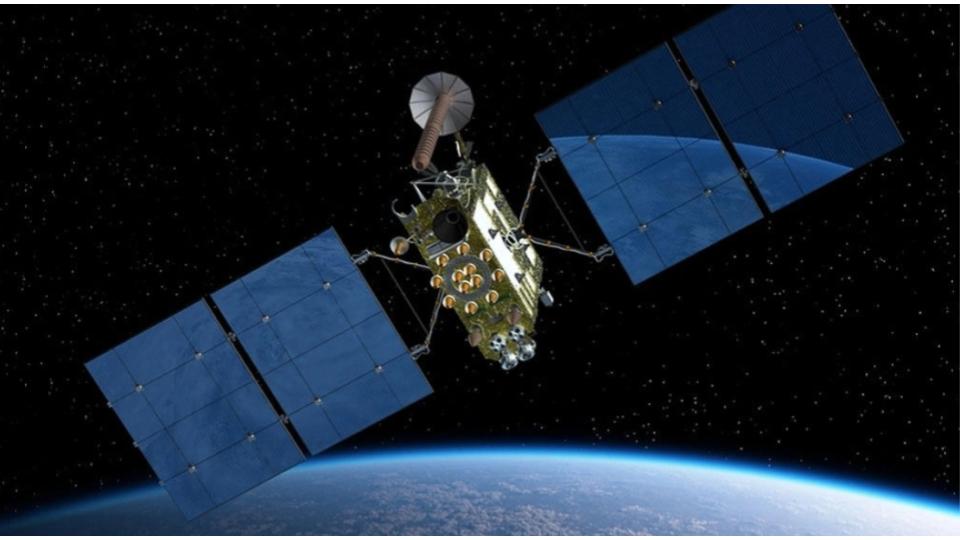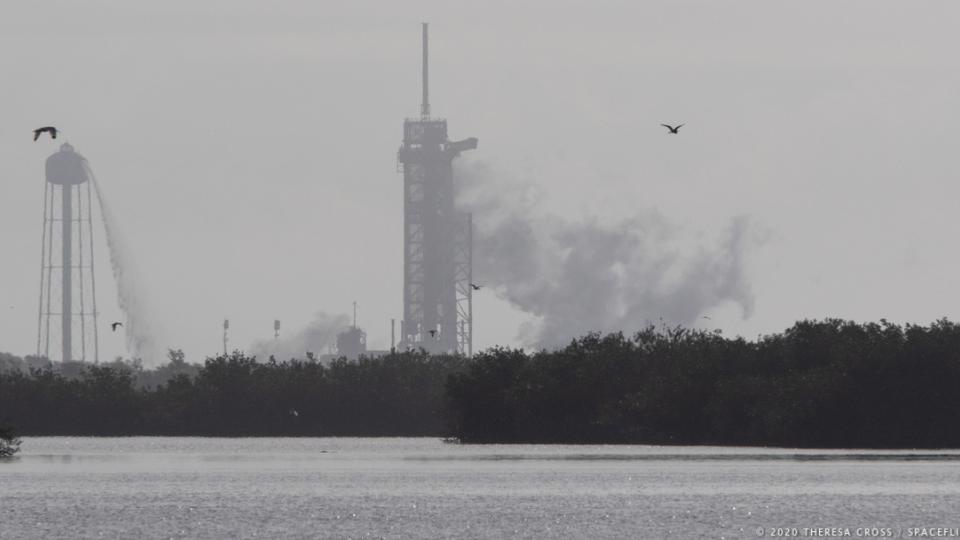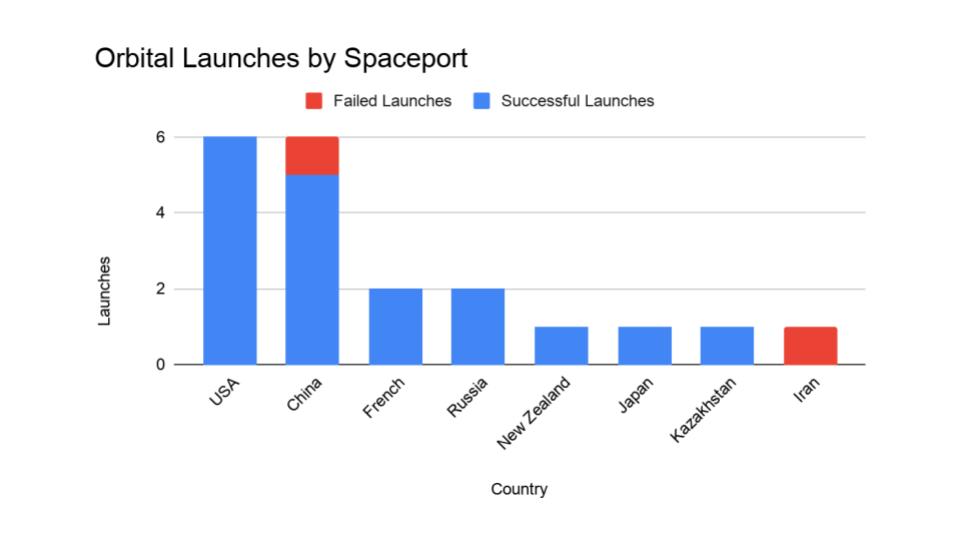
This week, we had a lot of important launches. SpaceX launches Bartolomeo research platform, China launched more of their Beidou GPS System, Russia launched more of their Uragan-M GPS System, and SpaceX launches more Starlink satellites.
Links
SpaceX launches Bartolomeo research platform
- List of Falcon 9 and Falcon Heavy launches
- Astronauts capture SpaceX cargo capsule with robot arm for final time
- CRS SpX-20 (Dragon)
- Space station to receive new outdoor deck for science experiments
- Late-night launch of SpaceX cargo ship marks end of an era
China launched more of their Beidou GPS System
- Beidou-3 G2
- China launches Beidou satellite, aims for completion of navigation network in May
- Xin Jishu Yanzheng 6 (XJY-6)
- Chinese Launchers »FAILURE: XJY-6 – CZ-7A (Y1) – WSLC – March 16, 2020 (13:34 UTC)
- Launch of China’s new Long March 7A ends in failure
- China announces failure in first launch of new Long March 7A rocket
- Montage of launch citizen cell phone launch videos
- Best single launch video
Russia launched more of their Uragan-M GPS System
- Soyuz 2-1b launches latest GLONASS-M spacecraft
- Soyuz rocket launches Glonass-M navigation satellite for Russian military
- Soyuz rocket launches with Russian navigation satellite
- Glonass-M (60)
- Forums »International Space Flight (ESA, Russia, China and others) »Russian Launchers – Soyuz, Progress and Unmanned »Soyuz-2-1b/Fregat – Glonass-M blok S8 – Plesetsk 43/4 – Mar 16 20 1828 UTC
SpaceX launches more Starlink satellites
Transcript
Hello, and welcome to the Daily Space for today Wednesday, March 18, 2020. I am your host Annie Wilson. Most Mondays through Fridays, our team will be here putting science in your brain.
Usually Wednesdays are for Rocket Roundup, and today is no different. This is not an April Fool’s Joke. Paragraph

First up, a SpaceX Falcon 9 rocket launched the CRS SpX-20 (Dragon) mission on Saturday, March 7, 2020 at 4:50 AM (UTC) / 11:50 PM EST.

CREDIT: NASA TV / SpaceflightNow
For the 20th and final time, a SpaceX Dragon 1 cargo module was lofted to the ISS. The picturesque late-night launch also featured a successful landing of the first stage of the Falcon 9 back at Cape Canaveral, and was the 50th successful landing of a Falcon 9 first stage booster. The capsule, on its third trip to the station, was successfully berthed to the station’s Harmony Module on March 9th at 10:25 UTC / 06:25 EDT using the Canadarm, with US astronaut Jessica Meir at the controls.
Future SpaceX cargo modules will be uncrewed versions of the new Dragon 2 capsule, which will not contain crew seating, life support, space toilets, or other accommodations such as the crew-operated flight controls and the Super Draco abort thrusters. Perhaps most importantly, the new version of the Dragon will be able to self-dock at the station like the current Progress modules do.
Aboard CRS-20 were almost 2,000 kg / 4,400 lbs of cargo and experiments, including an outdoor deck which will be mounted to the station during a future spacewalk. The Bartolomeo platform, as it is called, has 12 mounting points which will allow for remote, robotic installation of future commercial scientific experiments designed to be exposed to the vacuum of space. The deck was built in Germany and is owned by Airbus Defense and Space, a European aerospace corporation. It cost an estimated 40 million Euro (US$45 million) to construct.
Assuming a successful return to Earth later, the Dragon 1 will have delivered roughly 43 metric tons of cargo, supplies and experiments to the ISS, while returning about 33 metric tons of experimental results back to Earth.
Our next story begins just as the first story leaves off. Just after the Dragon capsule successfully docked with the ISS, another mission lifted off, this time from halfway around the world at the Xichang Satellite Launch Center in southwestern China’s Sichuan province. There, a Long March 3B rocket carrying the next to last Beidou navigation satellite lifted off at 11:55 PM UTC on Monday, March 9th. This marks the 54th total launch for the constellation, and Chinese authorities quickly announced the successful delivery of the satellite into its intended orbit.

This constellation features signals from low earth orbit, middle earth orbit, and geostationary orbit, allowing for multiple timing references for customers. (This is similar to the European Galileo system.) While its coverage is primarily intended for East Asia, customers can use the system for basic GPS-style location and timing reference around the world as well. This will provide the Chinese military with access to their own system; reportedly, they have relied on the US GPS to this point for military applications. According to Chinese media, the system “can provide services for the driverless vehicles, accurate berthing of ships, as well as takeoff and landing of airplanes,” and “will be widely used in the fields of communication, electric power, finance, mapping, transportation, fishery, agriculture and forestry.”
Chinese cell phone services have already incorporated the Beidou system into navigational apps available for commercial and private cellular customers.
Despite the success of the Beidou launch, the following week saw China suffer a bit of a set-back. On March 16th a new Long March 7a rocket attempted to launch a Xin Jishu Yanzheng 6 (XJY-6) satellite into a geostationary transfer orbit. While the launch itself appeared to go according to plan, the new third stage – derived from that of the Long March 3 rocket – failed to put the satellite into its intended orbit.

Normally, Chinese state media will announce successes more or less immediately; in this case, there was no word for hours after the launch. Chinese authorities eventually announced that the satellite had failed to make its intended orbit, but offered no explanation for the failure, saying only that “engineers are investigating.”
If the problem does involve some shortcoming or failure of the upper stage, this could result in the delay of several Chinese programs, including its crewed space flight program, which was planning to use the Long March 7a for future taikonaut missions.
Despite the failure, we do have a launch video for you.

On the same day as the Long March 7a mission was suffering its failure, a Soyuz rocket managed yet another success.
In another night time launch, the Russian military sent one of their own satellites into space: at 9:28 pm Moscow time, or 18:28 UTC, a Soyuz-2.1b carrier rocket equipped with a Fregat booster lofted an Uragan-M satellite successfully into GTO from the Plesetsk Cosmodrome some 800 km / 500 mi north of Moscow. The Fregat upper stage made three separate burns to deliver the satellite into its target orbit.

Like the Beidou constellation, the GLONASS system is operated by the Russian military in an effort to gain the advantages of a space-based timing and navigation system that is independent of the United States’ GPS constellation. The first satellite of the GLONASS constellation was launched way back in 1970, but the system as currently constituted has been operating since about 1996. Former Russian president Boris Yeltsin made the constellation a national priority in 2001, and the system has been steadily upgraded since that time.
The name of the latest version of the GLONASS satellite, Uragan, means “hurricane” in Russian. It has a mass of about 1,400 kg / 3,100 lb., and is designed to have an on-orbit service life of at least seven years. These can be launched in trios aboard the larger Proton rockets, or one at a time aboard an available Soyuz – as was the case here.

Finally, earlier today SpaceX launched its sixth batch of 60 StarLink satellites into low Earth orbit this morning, but this mission was far from smooth!

CREDIT: Theresa Cross, Space Flight Insider
This mission was originally scheduled to launch this past Monday morning East Coast time, and the count seemed to be going exactly according to plan — right up until the clock hit T- 00:00:00. At that point the nine Merlin engines of the first stage ignited and then immediately shut down as the onboard computers detected what SpaceX initially termed, “an out of family data” problem. In short, the power-up phase was not going according to plan so the computer hit the virtual Big Red Button which shut off the engines before the rocket could lift from the pad.
Further testing apparently revealed no firm cause for the faulty reading, and a new instantaneous launch window was set for 08:16 AM EDT this morning. This time no errors were detected, and the rocket lifted off as planned.
That was NOT the end of this adventure, however!

As the rocket roared into the Florida sky, the glitch from a couple of days before was a thing of the past. But several seconds before scheduled main engine cutoff, one of the nine Merlin engines on the first stage shut down prematurely. Elon Musk would later tweet that this was the advantage of having nine engines and the upper stage was able to reach its target orbit despite this shut-down.
The failure was not without cost, however. SpaceX announced on their webcast just before the deployment of the Starlink satellites that the first stage had failed its landing attempt on the drone ship, Of Course I Still Love You. Musk stated that a thorough investigation was needed to solve the issue prior to launching future missions. There was no immediate word as to how this might affect missions already in the pipeline, or how long they would be delayed, if at all, by the mishap.

To wrap things up, here’s a running tally of a few spaceflight statistics for the year:
- Toilets burned up: 1
- Total new satellites in orbit: 307
- Total satellites from launches: 293
We keep track of orbital launches by where they launched from. Here’s that breakdown:
Total launches: 20
- USA: 6
- China: 6
- French Guiana: 2
- Russia: 2
- New Zealand: 1
- Japan: 1
- Kazakhstan: 1
- Iran: 1
Your useless space fact for the week comes from @badpandabear on Twitch : Kepler 11145123 is the roundest natural object ever measured.
And that rounds out our show for today.Thank you all for listening. Today’s script was written by Dave Ballard and lightly edited by me, Annie Wilson. The Daily Space is produced by Susie Murph. Our fearless leader is Dr. Pamela Gay. This has been a product of the Planetary Science Institute, a 501(c)3 non profit dedicated to exploring our Solar System and beyond. We are here thanks to the generous contributions of people like you. Want to become a supporter of the show? Check us out at patreon.com/cosmoquestx


 We record most shows live, on Twitch. Follow us today to get alerts when we go live.
We record most shows live, on Twitch. Follow us today to get alerts when we go live.